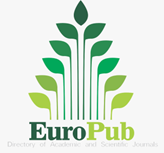Integrating disaster education into geography curriculum: Strengthening school-based preparedness
DOI:
https://doi.org/10.61511/jegeo.v2i1.2025.1696Keywords:
disaster, geography, preparednessAbstract
Background: Sukabumi Regency is an area prone to natural disasters in West Java. Its location on the south coast, its mountainous and hilly morphology makes Sukabumi Regency prone to earthquakes, tsunamis and landslides. The aim of this research is to illustrate how geography subjects in schools can be a source of disaster education that supports school-based disaster preparedness. Methods: Using a qualitative approach, this study involved in-depth interviews, observations, and document evaluations at SMAN 1 Warung Kiara, with geography teachers as the main informants. Data analysis was carried out through reduction, verification, and drawing conclusions, with local wisdom-based studies to improve learning materials before validation. Findings: Disaster education in schools plays an important role in improving student preparedness through integration into the geography curriculum, social activities, and mitigation training. Although there are challenges in delivering the material, a geographic literacy-based approach, disaster simulations, and partnerships with stakeholders can strengthen understanding and build a culture of preparedness. In addition, expanding disaster education through extracurricular activities such as scouting and the Juvenile Red Cross (PMR) can provide students with more in-depth practical experiences. Conclusion: The geography subject plays a crucial role in disaster education by enhancing students' awareness and preparedness for disaster risks. Through theoretical and practical approaches such as disaster simulations, risk mapping, and GIS technology, students develop essential mitigation skills. Integrating multidisciplinary perspectives further strengthens school-based disaster preparedness efforts. Novelty/Originality of this article: The novelty of this research lies in illustrating how geography subjects in schools, combined with extracurricular activities, can effectively support disaster education and preparedness, especially in disaster-prone areas like Sukabumi Regency.
References
Ari, D. R., & Suryani, A. (2022). Analisis Kesiapsiagaan Masyarakat terhadap Bencana Gempa di Kota Bandung. Jurnal Pendidikan Geografi, 12(1), 1-10. https://doi.org/10.24114/jpg.v12i1.28009
Badan Nasional Penanggulangan Bencana. (2021). Indeks Risiko Bencana Indonesia. Diakses dari https://bnpb.go.id/iris
Bernhardsdottir, A. E., Musacchio, G., Ferreira, M. A., & Falsaperla, S. (2016). Informal education for disaster risk reduction. Bulletin of Earthquake Engineering, 14(7), 2105–2116.
Fitriana, E. (2021). PENDIDIKAN SIAGA BENCANA: PENDEKATAN DALAM PEMBELAJARAN GEOGRAFI. Meretas: Jurnal Ilmu Pendidikan, 8(1), 72–87.
Fitriyani, R., Emaliyawati, E., & Mirwanti, R. (2021). Gambaran Tingkat Kesiapsiagaan dalam Menghadapi Bencana Gempa Bumi pada Mahasiswa Fakultas Keperawatan Universitas Padjadjaran Kampus Garut. Padjadjaran Nursing Journal, 9(1), 1-10. https://doi.org/10.24198/pnj.v9i1.32350
Gokmenoglu, T., Sonmez, E. D., Yavuz, I., & Gok, A. (2021). Turkish Ministry of National Education school-based disaster education program: A preliminary results of the program evaluation. International Journal of Disaster Risk Reduction, 52, 101943.
Hadi, H., Agustina, S., & Subhani, A. (2019). Penguatan Kesiapsiagaan Stakeholder dalam Pengurangan Risiko Bencana Gempabumi. Jurnal Geodika, 3(1), 30-40. https://doi.org/10.29408/jg.v3i1.1476
Kamil, P. A., Putri, E., & Ridha, S. (n.d.). Optimalisasi Environmental Literacy Pada Sekolah Adiwiyata di Kota Banda Aceh Untuk Menanamkan Sikap Peduli Lingkungan. Jurnal Georafflesia: Artikel Ilmiah Pendidikan Geografi, 4, 127–138.
Kurniawan, R., Harsa, H. H., Nurrahmat, M. H., Sasmito, A., & Florida, N. (2021). The Impact of Tropical Cyclone Seroja to The Rainfall and Sea Wave Height in East Nusa Tenggara. IOP Conference Series: Earth and Environmental Science, 930(1), 012027. https://doi.org/10.1088/1755-1315/930/1/012027
Ma'ani, H. (2025, April 14). Indonesia Rawan Bencana Nomor 2 Sesudah Bangladesh. Aktual.com. Diakses dari https://aktual.com/hasman-maani-indonesia-rawan-bencana-nomor-2-sesudah-banglades/
Muñoz, V. A., Carby, B., Abella, E. C., Cardona, O. D., López-Marrero, T., Marchezini, V., Meyreles, L., Olivato, D., Trajber, R., & Wisner, B. (2020). Success, innovation and challenge: School safety and disaster education in South America and the Caribbean. International Journal of Disaster Risk Reduction, 44, 101395.
Sakurai, A., Sato, T., & Murayama, Y. (2020). Impact evaluation of a school-based disaster education program in a city affected by the 2011 great East Japan earthquake and tsunami disaster. International Journal of Disaster Risk Reduction, 47, 101632.
Seddighi, H., Lopez, M. L., Zwitter, A., Muldoon, M. L., Sajjadi, H., & Yousefzadeh, S. (2023). Non-formal disaster education programs for school students in Iran: A qualitative study of the challenges experienced by stakeholders. International Journal of Disaster Risk Reduction, 103531.
Shoji, M., Takafuji, Y., & Harada, T. (2020). Behavioral impact of disaster education: evidence from a dance-based program in Indonesia. International Journal of Disaster Risk Reduction, 45, 101489.
Suryaningtyas, V. W., Hidayat, R., & Sari, D. R. (2018). Kesiapsiagaan Individu terhadap Bencana Gempa Bumi di Lingkungan Pusdiklat BMKG. Climagram: Jurnal Ilmiah Pendidikan dan Pelatihan BMKG, 1(1), 36-45.
https://doi.org/10.36456/climagram.vol1.no1.a36
Tahmidaten, L., & Krismanto, W. (2019). Implementasi pendidikan kebencanaan di Indonesia (sebuah studi pustaka tentang problematika dan solusinya). Lectura: Jurnal Pendidikan, 10(2), 136–154.
Tatebe, J., & Mutch, C. (2015). Perspectives on education, children and young people in disaster risk reduction. International Journal of Disaster Risk Reduction, 14, 108–114.
Toyoda, Y., Muranaka, A., Kim, D., & Kanegae, H. (2021). Framework for utilizing disaster learning tools classified by real and virtual aspects of community space and social networks: Application to community-based disaster risk reduction and school disaster education on earthquakes in Japan for during-and post. Progress in Disaster Science, 12, 100210.
Utami, D. A., Pratama, M. F., & Wibowo, A. (2024). Kesiapsiagaan Masyarakat dalam Menghadapi Ancaman Bencana Banjir di Desa Situraja. Geo-Image, 13(2), 60-72. https://doi.org/10.15294/geoimage.v13i2.4636
Wang, X., Peng, L., Huang, K., & Deng, W. (2022). Identifying the influence of disaster education on the risk perception of rural residents in geohazard-prone areas: A propensity score-matched study. International Journal of Disaster Risk Reduction, 71, 102795.
Zhong, S., Cheng, Q., Zhang, S., Huang, C., & Wang, Z. (2021). An impact assessment of disaster education on children’s flood risk perceptions in China: Policy implications for adaptation to climate extremes. Science of the Total Environment, 757, 143761.
Published
Issue
Section
Citation Check
License
Copyright (c) 2025 Nandi Kurniawan, Saipiatuddin, Achmad Nur Hidayaht

This work is licensed under a Creative Commons Attribution 4.0 International License.











